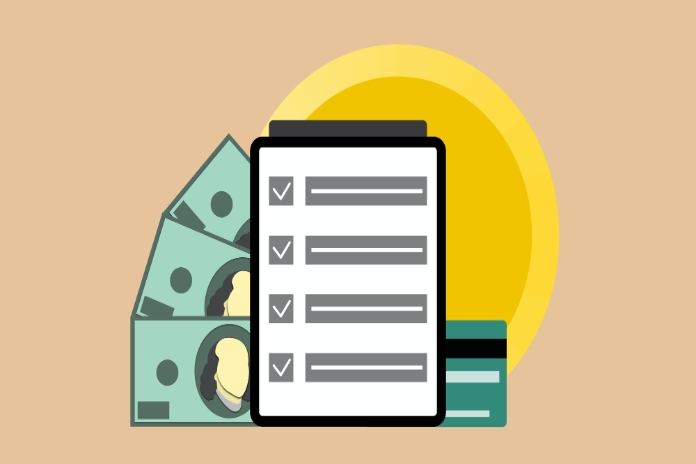It may be challenging, but getting a business loan with poor credit is still feasible. Lenders focus on new businesses and those with less than stellar credit. Loan products are more suitable for company owners with poor credit but at higher interest rates. You may increase your chances of being approved for a loan and finding a loan that suits your company’s requirements by doing a few simple actions.
1. Figure out why you want or need financing
Think carefully about why you need money for your company before you go loan shopping. When evaluating a loan application, financial institutions assess the borrower’s declared objective and how the loan would affect the business’s potential to make income. This is truer for applicants with poor credit or no credit history. Think about the following questions while assessing your need for financial aid:
If the company receives the money, will it be able to better use it, become more competitive, and ultimately boost sales and production?
Is there any other way to get our hands on this thing, or keep on if we can’t afford it?
Crowdfunding and stock offerings are two common ways to generate money without paying interest.
Although there is a wide variety of uses for small business loans, it’s essential to consider whether or not taking out a loan is the right move for your company. If your company is low on funds and has trouble repaying loans, this is very important to keep in mind. Loan providers will only be willing to help you out if you can clearly explain how their money will positively impact your firm.
2. Verify That You Are Qualified
You may have a more challenging time getting a loan if you have poor credit, but lenders take other aspects into account. While credit history is undoubtedly a factor, banks also consider a variety of other factors when deciding whether or not to provide a loan. Take into account the following criteria when deciding whether or not you qualify for a loan:
Credit rating in general and specifically for you:
When considering an application, most business lenders first check the applicant’s personal credit history. To be eligible for a poor credit business loan, your credit score has to be at least 530, but 680 or higher will get you better rates.
Credit rating for businesses:
When deciding whether or not to provide a loan, many financial institutions additionally consider the application company’s credit score. Suppose your company has been around for at least a year and would thus qualify for a credit score. You may see your credit profile with Dun & Bradstreet (D&B), Experian, or Equifax.
Duration of service:
Lenders like firms that have been in operation for at least a year and those with stellar credit scores.
Revenue during the year:
Annual revenue indicates a company’s capacity to repay the loan on schedule and in full. Suppose a startup still needs to have financial records. In that case, it can still prove its viability by making five-year estimates.
Earnings or money in hand:
A company’s cash and equivalent transactions within a certain period constitute its cash flow. This figure, like revenue, may show how easily a company can pay its monthly bills. As such, it is often a very reliable predictor of the risk a company represents to potential lenders.
Current levels of debt:
The level of debt that a firm is now carrying indicates its financial health and capacity to pay its financial commitments. A company with a low debt burden is more likely to get financing than a high debt load.
The intent of the loan:
Lenders have a wide range of opinions about what is and is not a desirable use of a company loan’s proceeds. Banks are more likely to provide financing if they believe it would increase the company’s chances of success via increased sales or the introduction of new goods and services.
3. Evaluate Different Loan Programs for Your Company
Banks, credit unions, and internet lenders provide competitive small business loans. Search for service providers that are less stringent in their requirements if you have low credit. Some internet loan providers, for instance, offer more lenient credit score standards than brick-and-mortar establishments like banks and credit unions. Similarly, while looking for funding, exploring business lenders that provide secured loans with fewer restrictions is advisable.
Those with the best credit histories often get the best interest rates. Shopping around for the best loan terms and rates is still crucial by comparing loan amounts, periods, APRs, and fees across various lenders. The application processes at certain banks are more straightforward, and the financing timeframes are shorter than others. Even if a business’s credit is poor, this option still exists.
4. Get the documents you need
Documentation proving the applicant’s identity, the applicant’s company, and the applicant’s capacity to repay loans is often required by lenders. When applying for a business loan, it is customary to provide two years’ worth of tax returns (both personal and corporate) and three years’ worth of financial statements. To that end, companies seeking invoice factoring may be asked to provide AR and AP aging data.
Lending institutions often require a business plan showing the applicant’s income stream and capacity to repay the loan. Revenue predictions are a crucial part of any business strategy, particularly for new businesses that have yet to establish their financial footing.
5. Make a Detailed Business Plan
A business plan is a formal document that describes the objectives of a firm and the steps that will be taken to attain those objectives, both financially and operationally. The firm’s capacity to repay a loan should be shown in the business plan, executive summary, and company overview. Therefore, candidates with adverse credit need to have a detailed business plan.
These components should all be included in any viable company plan:
Explanation of what it is that you sell. Explain to potential buyers how your company’s offerings will improve their lives here. This is also a great time to talk about how your product stacks up against the competition and whether or not your company is investing in R&D to stay ahead of the curve.
Examining the market:
The market research has to have a synopsis of the company’s ideal clientele, including demographic information. Add a statistical analysis of the market’s past, present, and future conditions. Finally, explain how your company compares to the competition and where each rival succeeds and fails.
Plans for promoting products or services:
Include a marketing plan developed to promote the business to its target audience based on the product and market study conducted by the company. Outline your plans for increasing sales and income and the marketing budget you’ll be using.
Managing and coordinating resources:
Lenders might learn more about the company’s structure and processes by looking at an organizational chart. The same holds true for the management team since knowledge of them may inspire faith in the company’s prospects. Provide the names of any accountants or lawyers who can vouch for your company to potential investors or lenders, if necessary.
Financials:
Describe the company’s current and projected revenue streams in the business plan. Please include financial accounts, cash flow statements, and any other relevant information dating back at least three years if the company is already up and running. Businesses with less than five years of experience should provide estimates like revenue statements and capital expenditure budgets for the next few years.
In practice, however, a business plan will likely include more components than those described above, depending on the specifics of the sector in question. The U.S. Small Organization Administration (SBA) maintains several useful online tools to assist entrepreneurs like you in developing a sound strategy for your business.
6. Fill Out An Application
After you have assembled your loan application materials, you should formally apply for the loan with the lender. Loan applications may be submitted in person, over the phone, or online, depending on the financial institution. You may contact your chosen lender or look at its website to find out more about the application procedure.
Loan Options for Low-Credit-Score Small Businesses:
If your business’s credit is less than stellar, you may find getting a loan challenging, but you have choices. Suppose you operate a company but have less-than-perfect personal credit. In that case, these are the most popular lending options to consider.
Lending for a certain period:
A term loan is a conventional kind of company financing in which a borrower receives a lump amount and makes periodic repayments over an agreed-upon time. Three- to ten-year terms are expected, with maximum loan amounts of roughly $50,000 and interest rates that start close to 9%.
Credit cards for companies:
Credit cards for businesses provide their owners with a line of credit that may be used repeatedly to pay for operational costs as they arise. Interest is only charged on amounts that remain from month to month. However, the finest business credit cards have annual percentage rates of up to roughly 25%. Applicants with less-than-perfect credit may also benefit from the simplified application procedure.
Credit lines for companies:
A business line of credit allows the borrower to borrow up to the line’s maximum capacity. During the draw time, which may last up to five years, the company can withdraw funds as they see fit. During the draw term, the company may repay the borrowed funds and redraw from the line of credit without incurring interest on the unused amount. There will be a transition to repayment when the draw period concludes.
Factoring of invoices:
If you’re unfamiliar with invoice factoring, it’s the process through which a company sells its unpaid bills to a factoring firm in return for immediate payment of a percentage of the invoice total, often between 85% and 90%. The factoring firm takes over the collections process. It pays the company a percentage of the remaining invoice amount, less their factoring charge. Invoice factoring is a secured loan that does not have the stringent standards of other business loans.
Funding is based on future invoices:
To help small company owners bridge cash flow gaps, invoice financing provides short-term loans based on the value of an enterprise’s outstanding invoices as collateral. Unlike invoice factoring, the company is responsible for collecting payments. The loan is returned after the bills have been settled. Credit-challenged borrowers may qualify for invoice financing since the invoices serve as security rather than a guarantee against default.
A loan for the purchase of equipment:
Borrowing money to go toward the acquisition of machinery or tools constitutes equipment finance. Borrowers with less-than-perfect credit ratings will still have a chance of being approved for a loan when the loan is secured by the collateral. The most important equipment financing deals often include multimillion-dollar loans with maturities of 25 years or more.
Microloans:
Microloans are short-term, low-interest loans that may provide much-needed capital to enterprises. While the minimum amount for a microloan offered by the SBA’s program is $500, the total amount of loans guaranteed by the SBA is $50,000. Nonprofits and websites like Kiva also provide access to microloans.
Cash advances for businesses:
Businesses may get a lump amount of money via merchant cash advances (MCAs) by agreeing to provide the lender, often a merchant services firm, a percentage of their future sales. Businesses with a large sales volume and want immediate access to cash but do not have an established credit history may qualify for this financing, often made available via merchant services providers.
How to Improve Your Credit Score to Apply for a Business Loan
Getting a business loan could be challenging but possible if your credit could be better. Consider the following advice if you need a loan for your company but have adverse credit:
-
-
- Create a business plan showing investors and lenders that you can profit and repay your debt.
- Seek a co-signer whose personal credit score exceeds that of the company owner or other candidate.
- Substitute valued collateral for securing the loan and lowering the lender’s risk.
- Get your credit in order before asking for a loan.
-
Conclusion
Especially for first-time company owners, applying for a business loan with adverse credit might be intimidating. However, you may still be eligible for a company loan even if you have a poor personal credit score or no business credit score. Find out how much money you need, and then look for a lender with looser requirements. Please be aware that the interest rate you qualify for may be higher than the rates offered to candidates with better credit.
Featured Image: Pexels © Monstera







